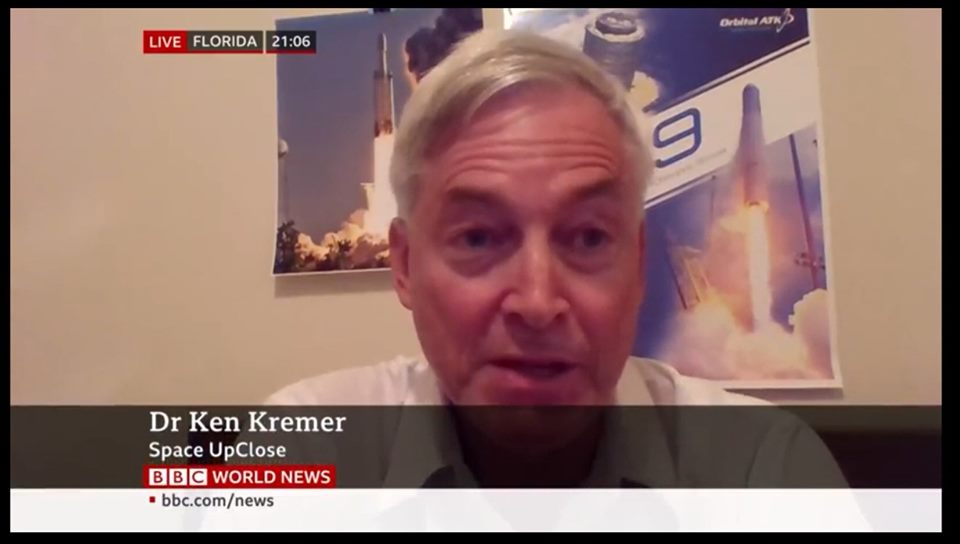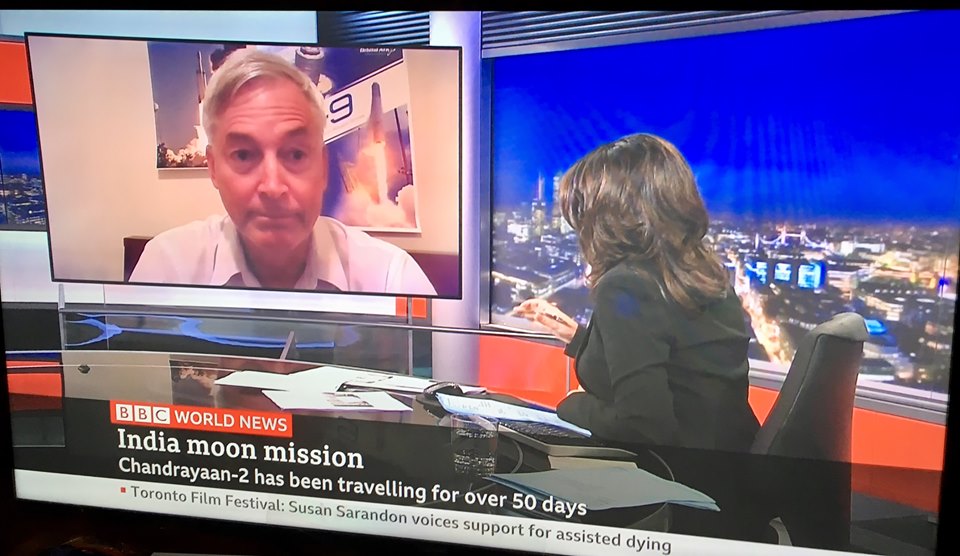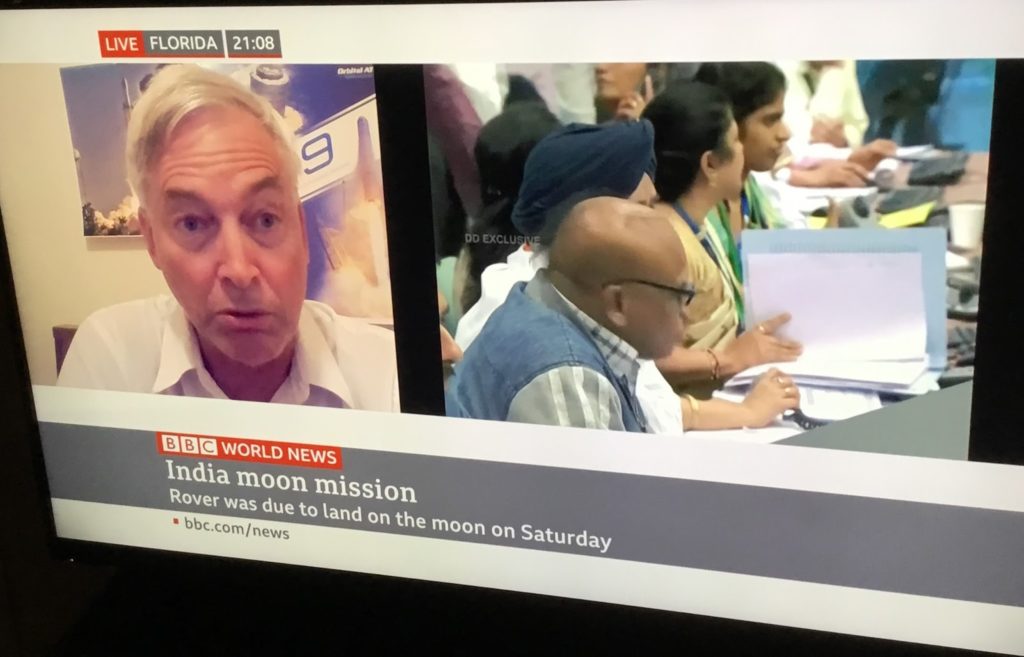interview on BBC World TV news discusses India 1st moon landing attempt
on 6 September 2019 which apparently failed in the final moments of descent to touchdown
near the lunar south pole region when contact was lost.
Ken
Kremer — SpaceUpClose.com &
RocketSTEM – 6 September 2019
TITUSVILLE, FL – India’s first attempt to land a robotic probe
on the Moon’s rugged surface apparently ended in failure today, Sept. 6, when mission
scientists lost contact with the Vikram lander spacecraft in the final moments of
its descent before the planned soft touchdown Friday afternoon, Sept 6 in a
region near the lunar south pole – an area close to potential deposits of water
ice and of high interest to scientists around the globe.
Watch my live interview on BBC TV World News
in its entirety – which aired at 9:06 p.m. EDT Sept. 6 with later rebroadcasts, just 5 hours after the ambitious landing attempt by
the ISRO (Indian Space Research Organisation)
ended with no signal from the 1470 kg Vikram spacecraft as part of the Chandrayaaan-2
mission.
The robotic landing had been scheduled for
approximately 4:23 p.m. EDT at a landing site located at 70.9 degrees south latitude on the near side of the moon – much
farther south and closer to the lunar south pole than ever attempted before.
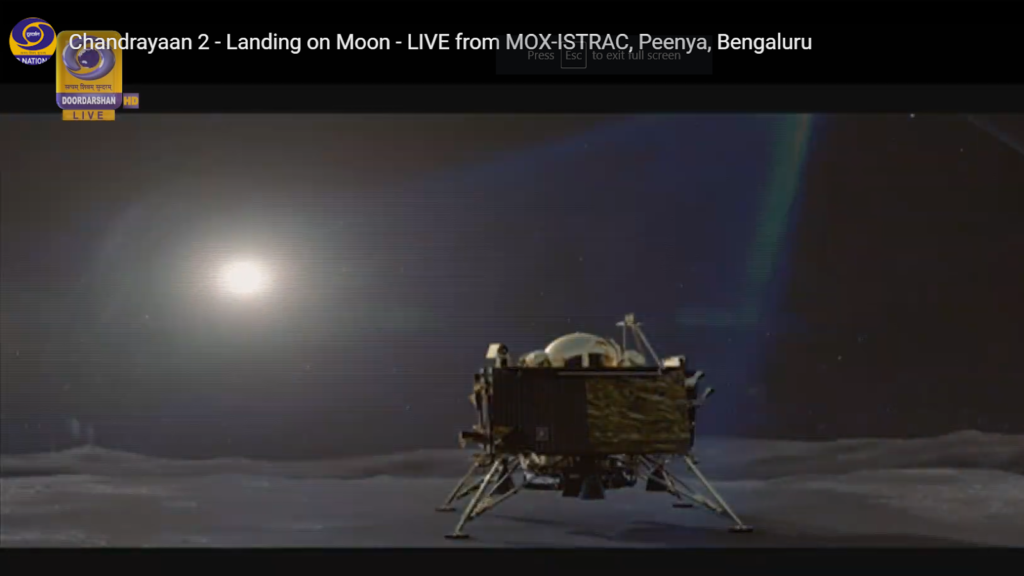 |
|
Screenshot of ISRO live broadcast of India’s 1st
moon landing attempt on 6 Sept. 2019 shows artists concept of Vikram moon lander as part of Chandrayaan-2 mission |
The Vikram landing attempt was being broadcast
live by ISRO as the Indian Prime minister Narendra Modi was watching and in attendance at the Chandrayaaan-2 Mission
Control in Bengaluru, India, as the high drama situation
quickly changed from excitement and anticipation to doom and gloom and sad
faces.
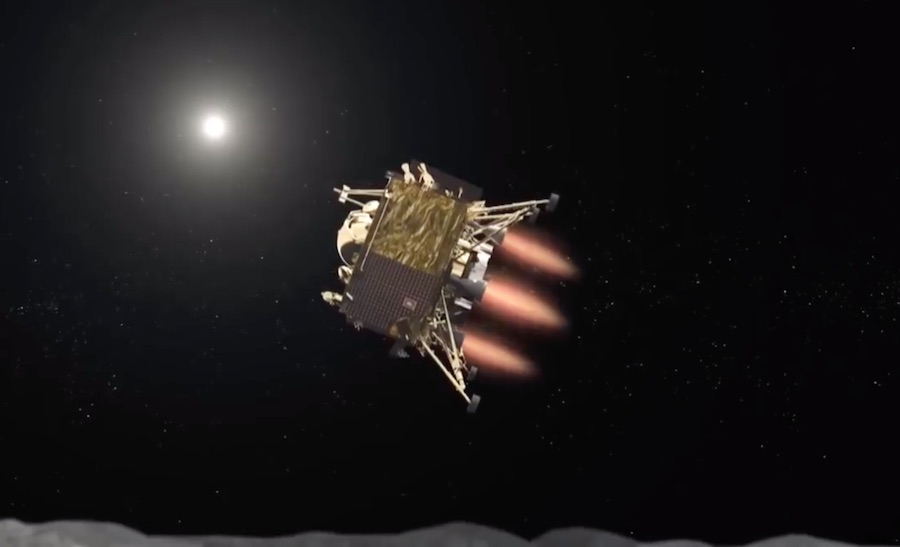 |
|
Screenshot of ISRO live broadcast of India’s 1st
moon landing attempt on 6 Sept. 2019 shows artists concept of Vikram moon lander as part of Chandrayaan-2 mission |
Contact with the 4 legged spacecraft was lost
at an altitude of only 2.1 kilometers after the four ‘rough braking phase’ thrusters
had successfully fired at 4:07 p.m. ET to slow the descent from an initial velocity
of 3600 mph following separation from the mothership Chandrayaaan-2 orbiter in
lunar orbit shortly before 4 p.m. EDT to start a 15 minute powered descent that
should have ended at nearly 0 mph for a successful touchdown.
Had the landing attempt succeeded India would
have become only the fourth nation to land on Earth’s nearest neighbor – following
the former Soviet Union, United States and China.
About an hour later the ISRO Chairman K. Sivan
appeared and read this statement live:
“The Vikram lander descent was as planned, and
normal performance was observed up to an altitude of 2.1 kilometers (1.3 miles).
Subsequently, the communications from the lander to the ground station was
lost. The data is being analyzed.”
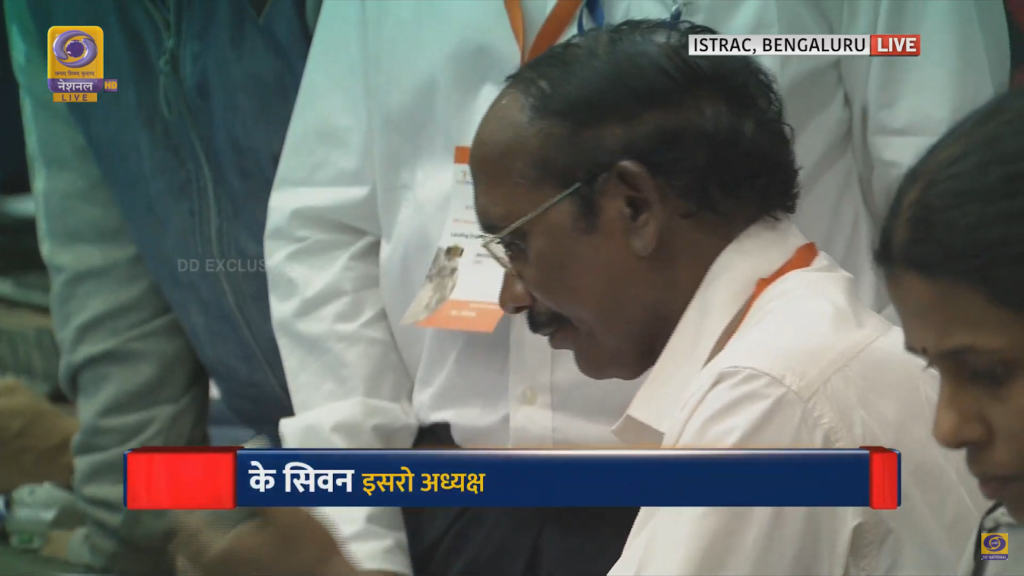 |
|
Screenshot of ISRO live broadcast of India’s 1st
moon landing attempt on 6 Sept. 2019 with ISRO Chairman statement |
No further details have been provided by ISRO.
A mini rover named Pragyan with a mass of 27 kg
(59-pounds) was also loaded on board the lander and would have descended to the
surface a few hours after touchdown – had all gone well.
loaded on board the Vikram moon lander – which measures 2.5 x 2.0 x 1.3 m (8.3
x 6.6 x 4 ft).
The lander mission was designed to last 14 days
for 1 lunar day-. It was not built to withstand the frigid 14 day lunar night.
Nevertheless India and its scientists and
engineers are to be applauded for attempting this bold mission and Prime
Minister Modi urged the team to work hard and “be courageous” as he also spoke
to a large group on Indian students on had to watch the live proceedings.
Modi also told everyone to beam with pride at
Indias’ outstanding space program accomplishments conducted with home grown
technology.
“We came very close, but we will need to cover more ground in the
times to come,” Modi said. “Every Indian is filled with a spirit of pride as
well as confidence. We are proud of our space program and scientists. Their
hard work and determination has ensured a better life, not only for our
citizens, but also for other nations … India is suffering, but there will be
many more opportunities to be proud and rejoice.
“When it comes to our space
program, the best is yet to come. There are new frontiers to discover and new
places to go … To our scientists, I want to say India is with you.”
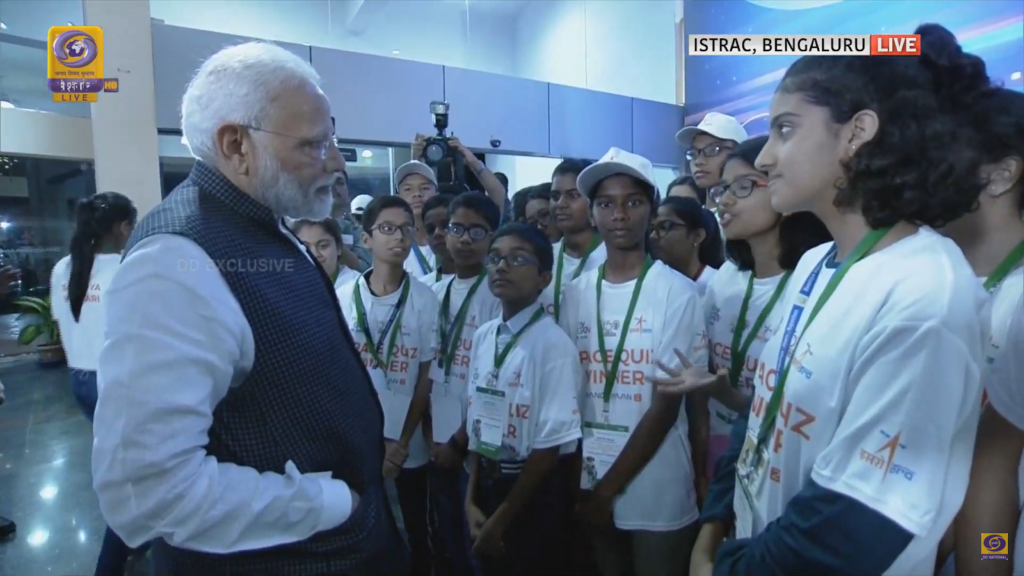 |
|
Screenshot of Indian Prime minister Narendra Modi was watching the
Chandrayaan-2 Mission from Mission Control in Bengaluru, India, speaking to Indian students on 6 Sept. 2019 |
Soft landing on the moon is not an easy task.
In fact it’s an enormous engineering challenge and over half of all moon
landing attempts have failed during the space age.
A moon landing attempt by a private Israeli
company failed earlier this year in April 2019 when the Beresheet probe crash
landed. Read our series of articles, enjoy
our launch photos and watch my interviews with the I24 Israeli TV news channel.
China did successfully land a lunar probe for
the second time earlier this year – on the lunar far side for the first time.
The mission cost approximately $140 million and
continues with the Chandrayaan-2
orbiter outfitted with eight state of the art instruments including high
resolution cameras, spectrometers and radar to map the moon minerology and
search for water ice in greater detail.
Chandrayaan-2 is a follow up to Chandrayaaan-1 which was launched a decade ago in 2008 and detected the first evidence of
water ice inside the moon permanently shadowed craters at the lunar poles.
ISRO says the Chandrayaaan-2
lunar orbital mission could last as long as 7 years – far beyond the original design
goal of 1 year – an an altitude of around 62 miles
(100 kilometers).
Chandrayaan-2 was launched on July 22, 2019
from India’s spaceport and achieved lunar orbit on Aug. 20.
NASA aims to send the 1st woman and
next man to land on the moon’s south pole on the Artemis 3 mission in 2024 – specifically
to investigate the water ice in these permanently shadowed craters.
Watch for Ken’s
continuing onsite coverage of NASA, SpaceX, ULA, Boeing, Lockheed Martin,
Northrop Grumman and more space and mission reports direct from the Kennedy
Space Center, Cape Canaveral Air Force Station, Florida and Wallops Flight
Facility, Virginia.
Stay tuned here for Ken’s continuing Earth and
Planetary science and human spaceflight news: www.kenkremer.com –www.spaceupclose.com – twitter
@ken_kremer – email: ken at kenkremer.com
Dr. Kremer is a research scientist and journalist based in the
KSC area, active in outreach and interviewed regularly on TV and radio about
space topics.
Ken’s photos are for sale and he is available for lectures and outreach events
Museum, Titusville, Florida.
Curiosity Mars rover illustrated with Ken’s custom created Mars rover panoramas
from Curiosity, Spirit and Opportunity and up close clean room
and launch pad views. Free
and open to public.
Space/Rocket/Mars imagery for sale to support his outreach.


